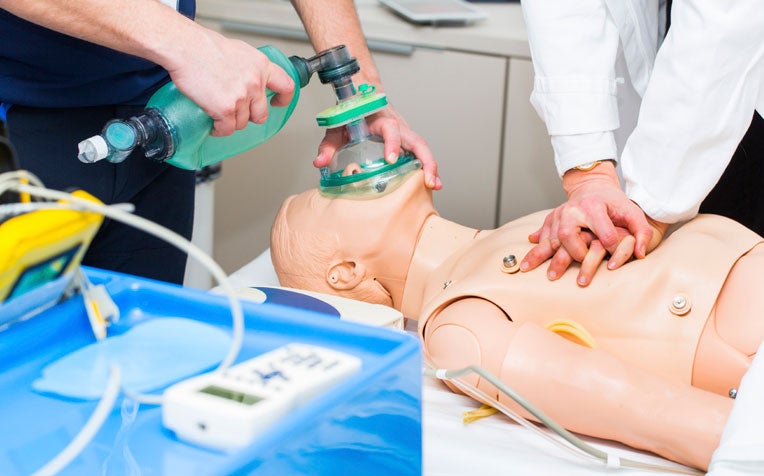
Children as young as 11 are learning CPR as part of a programme aimed at schools and the wider community to encourage more people to pick up life-saving skills
Why should you pick up cardiopulmonary resuscitation (CPR) skills?
Every year, 1,800 people in Singapore collapse and die when their hearts suddenly stop and no one offers life-saving aid before paramedics arrive. Just 20 per cent of bystanders will perform cardiopulmonary resuscitation (CPR) on a cardiac arrest victim, even when six out of 10 of such incidents occur in the presence of family, friends or colleagues.
To encourage more people to perform CPR and use an automated external defibrillator (AED), the Unit for Pre-hospital Emergency Care (UPEC) of Singapore General Hospital (SGH) has introduced a simplified programme for people to learn how to perform CPR and use an AED.
The DARE Programme: What is it?
“To rely on paramedics or hospital doctors to save a cardiac arrest patient might be to leave it too late. Bystander CPR really gives a patient a fighting chance,” said Associate Professor Marcus Ong, Medical Director, UPEC, and Senior Consultant, Department of Emergency Medicine, Singapore General Hospital (SGH), a member of the SingHealth group.
Unlike the full four-hour CPR and AED certification course, the Dispatcher Assisted first Responder (DARE) Programme is a one-hour hands-on session. Participants learn to dial 995, stay on the line with the medical dispatcher, perform CPR as directed, and use an AED with voice prompts to help a victim’s heart restart beating. Guidance is provided throughout the resuscitation process, similar to what one might experience in a real emergency.
Since April 2014, more than 2,000 students from primary and secondary schools and junior colleges have gone through the DARE programme. Sessions are also being planned for other community groups.
CPR crucial for cardiac arrest victims
In Singapore, it takes an average of 10 minutes for an ambulance to arrive and 46 minutes before a patient reaches a hospital, underscoring the importance of having CPR administered as quickly as possible.
A cardiac arrest occurs when the heart suddenly stops functioning, unlike a heart attack which occurs when blood flow to the heart is blocked.
In a cardiac arrest, the brain can suffer massive damage and death can occur if treatment is not given quickly. Every minute that CPR is delayed lowers a victim’s chance of survival by about 10 per cent.
Many bystanders are reluctant to perform CPR or use an AED even if they have been trained to use both. This is because they lack the confidence to apply the life-saving skills they have learnt, said Dr Jade Kua, Programme Director of DARE, UPEC, and Consultant, Department of Emergency Medicine, KK Women’s and Children’s Hospital (KKH), a member of the SingHealth group.
Some worry that they might do more harm to the patient, like cracking a rib if too much force is applied during CPR, she added. But having children as young as 11 take part in a DARE programme sends the impor tant message that just about anyone can pick up the basic skills to respond to a cardiac arrest.
Taking a lesson from Japan
In Japan, Dr Kua noted, even children of kindergarten age undergo similar programmes. So people who haven’t undergone DARE programme or other training can still help a cardiac arrest victim, as the dispatchers who respond to 995 calls will prompt callers to perform CPR and to use an AED.
Dr Kua added that teaching children to perform CPR and to use an AED empowers and prepares them for an emergency.
“It can also potentially instil the basic consciousness to help someone who is in trouble and remove the fear of acting in an emergency. Because of their young age, we find they’re able to improve on their confidence level after the programme,” Dr Kua said.
Ref: Q15
Contributed by















 Get it on Google Play
Get it on Google Play